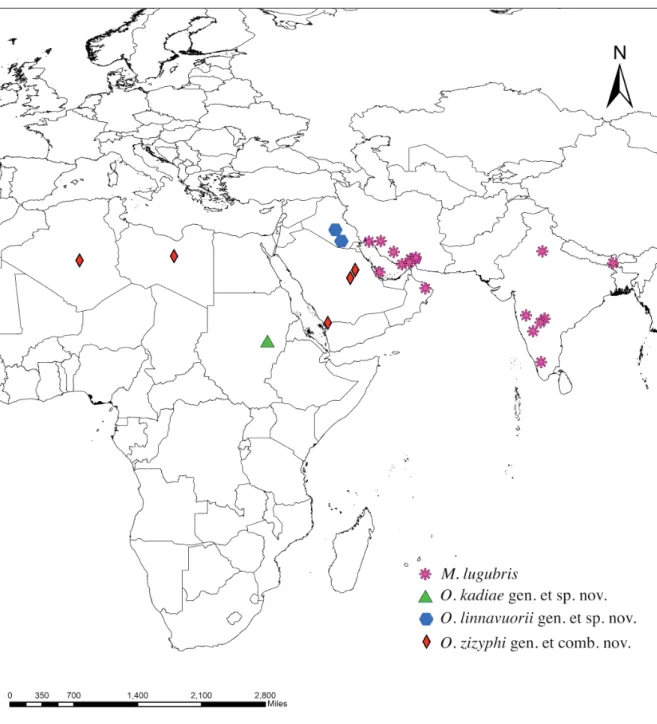2017 · El-Sonbati S.A. et al.
This work is licensed under a Creative Commons Attribution 3.0 License.
R e s e a r c h a r t i c l e
urn:lsid:zoobank.org:pub:F4CAABA4-07FD-4757-A42E-506C3C72C596
A new leafhopper genus with two new species related to Masiripius Dlabola, 1981 (Hemiptera, Deltocephalinae, Cicadellidae, Opsiini)
Saad A. EL-SONBATI
1,*, Michael R. WILSON
2& Hathal M. AL DHAFER
31,3
King Saud University, Plant Protection Department, College of Food and Agriculture Science, King Saud University Museum of Arthropods, P.O. Box 2460, Riyadh 11451, Saudi Arabia.
2
Department of Natural Sciences, National Museum of Wales, Cardiff CF10 3NP, Wales, U.K.
*
Corresponding author: ssonbati@ksu.edu.sa
2
Email: mike.wilson@museumwales.ac.uk
3
Email: hdhafer@ksu.edu.sa
1
urn:lsid:zoobank.org:author:E6A717FA-64D6-441D-AB29-070C8707D7D2
2
urn:lsid:zoobank.org:author:0F3D8D63-F677-4A68-9BEA-005FC429108B
3
